

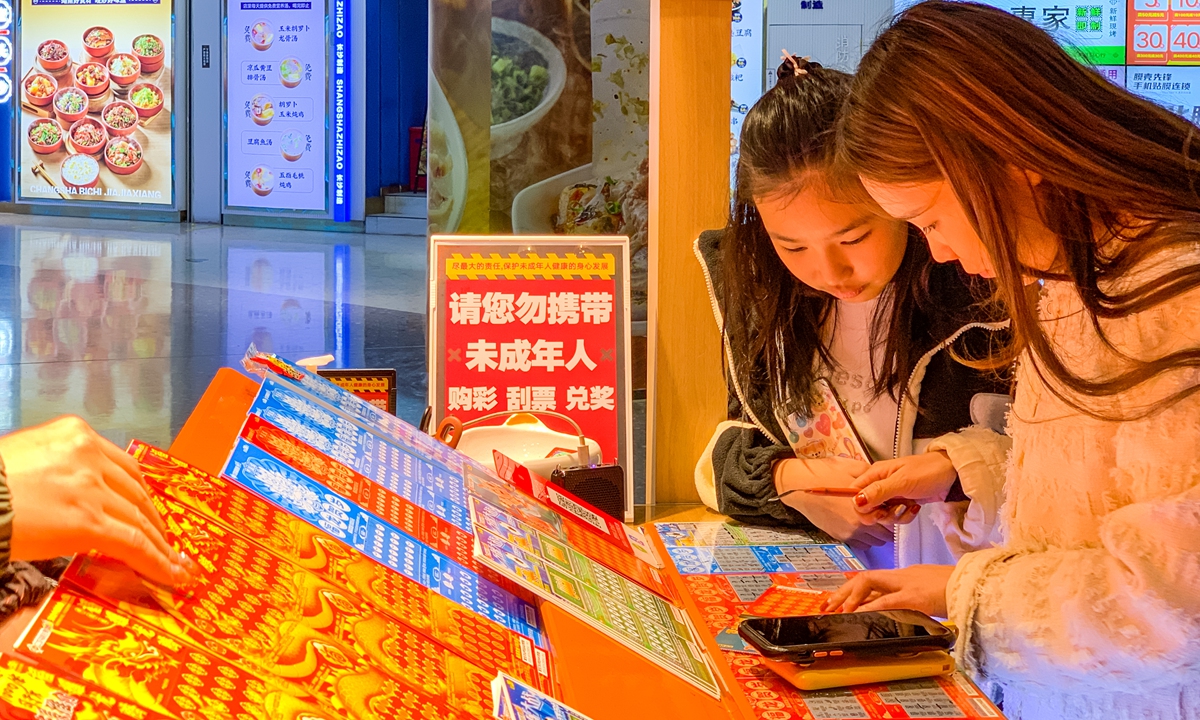
Two scratch ticket enthusiasts examine their tickets at a lottery ticket booth. Photo: VCG
“Now let’s see…” as the livestream host slowly scratches the silver coatings on the ticket with a key, viewer Liu Jinjuan nervously watches her phone. With fists clenched and breath held, Liu feels as if the key is also scratching at her heart.
“The number is…23! Wow, I win 100 yuan [$13.8]!” the host cheers, and so does Liu. She feels that this scratch ticket, even though not hers, has become a fun highlight of her day.
Liu is among a surging Chinese youth who have increasingly taken a liking to scratch tickets. They flood the lottery ticket booths on streets or in malls, buy a few scratch tickets, and carefully scratch off every concealed number with nervous excitement.
In the first two months of 2024, the sales volume of scratch tickets (or instant lottery tickets) reached 25.262 billion yuan in the Chinese mainland, a dramatic increase of 93.8 percent year-on-year, according to Chinese Ministry of Finance data.
Scratch tickets have become trendy among Chinese people, particularly among the youth, said Li Hai, dean of the School of Economics and Management at Shanghai University of Sport (SUS), who also directs the Shanghai Sports Lottery Research Center.
Emotional value
Liu shared with the Global Times her latest scratch ticket experience on Tuesday: She bought a 10 yuan ticket and a 20 yuan one, which respectively won her 20 yuan and 30 yuan.
Liu netted 20 yuan. “I was so lucky,” she said as she kissed the two tickets. “They made my day.”
“The excitement and joy of winning the lottery is unparalleled,” Liu told the Global Times. She started buying scratch tickets early in the year. Every week she buys some 10 tickets, costing her about 200 yuan. The biggest prize she has ever won so far has been 200 yuan. “I don’t care about how much I can win exactly,” said Liu, adding that “scratch tickets offer me more emotional value than money. I feel very happy even when I win less than 10 yuan.”
“And the process of scratching to reveal the numbers is a source of enough joy,” she noted. “It’s like the next piece of chocolate in the box, giving a sort of hidden surprise.”
The emotional value that a scratch ticket brings is the main reason why it attracts young people, Li said. Different from the number lotteries, which usually draw the winning numbers once a week, scratch tickets enable the buyers to know whether they have won a prize within seconds, and that offers them instant excitement.
“Also, the maximum prize amounts for scratch tickets are not very high, but the tickets have much smaller prizes than number lotteries do,” Li said. “That allows more scratch ticket buyers to enjoy the happiness of winning.”
Therefore, the general customer profile of a scratch ticket buyer is usually someone who has a stable job and income, as well as a relatively high education level, Li concluded. “They are rational and don’t have a get-rich-quick speculative mindset,” he told the Global Times. “They buy scratch tickets for fun.”
Echoing Li, scratch ticket lover Sherry Yang shared that she usually buys scratch tickets when she is “either very happy or very unhappy.” “Sometimes when I feel down, I buy a lot of scratch tickets and spend a whole afternoon on them,” she told the Global Times. “That’s a good way of relieving stress.”
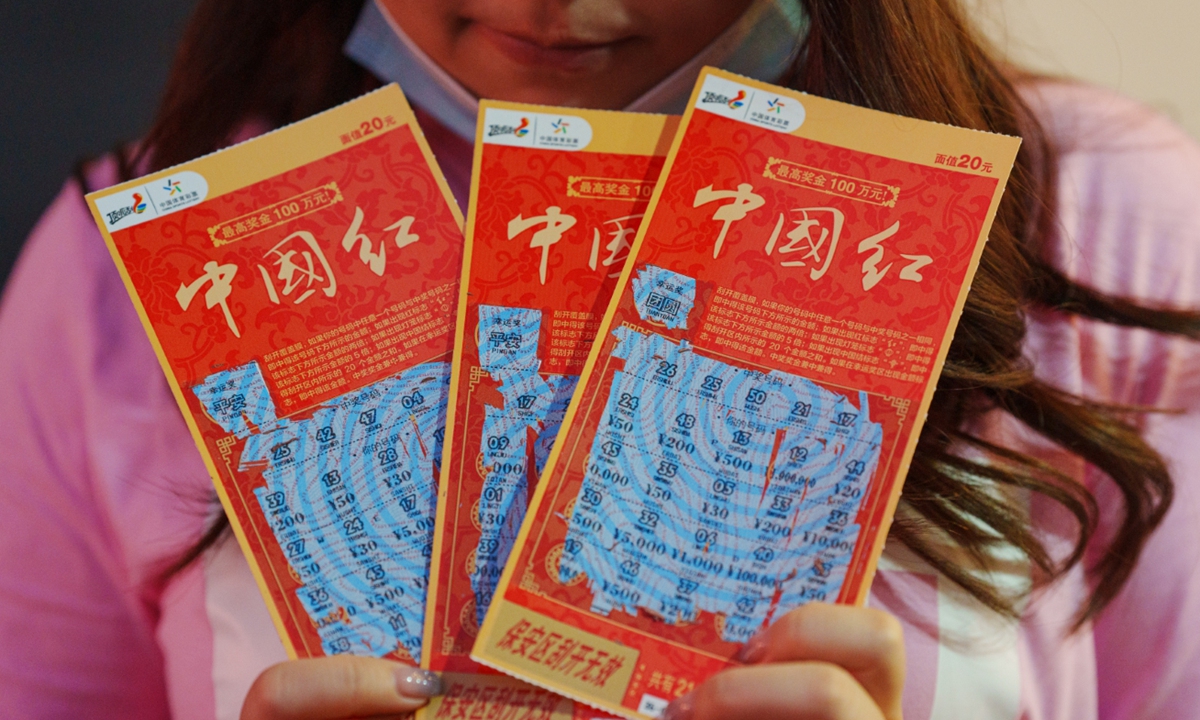
A customer shows off three used scratch tickets. Photo: VCG
Young trend
The lottery market is trending young, with scratch ticket purchasers mostly between 18 and 34 year old, according to a report released by a Chinese domestic data research and consulting institute in October 2023.
The scratch ticket industry is trying to provide more supplementary services that cater to the growing number of young buyers. At a China Sports Lottery’s booth in Jing’an district, central Shanghai on Tuesday, the Global Times witnessed a booth staffer sending scratch ticket buyers lovely cards, stickers, and red packets with lucky words on them.
“Young people like these small gifts; they hope the gifts will bring them good luck,” the staffer told the Global Times.
Interestingly, creative young customers have also explored new uses for the scratch tickets. On social media, it’s common to see Gen Zers send invited wedding or birthday party guests scratch tickets as a small welcome gift, which is affordable and can enliven the atmosphere.
Young people have developed a new social function of scratch tickets, said Li. Just like ball games or TV series, buying scratch tickets has become a lighthearted conversation piece among friends, he said.
For IT industry practitioner Xiang, the social function is one of the biggest values of scratch tickets. “I only buy scratch tickets with friends,” the 30-year-old told the Global Times. “To me, it’s a ‘friend activity’ that can amplify the fun of the experience itself.”
Healthy, orderly development
China has one of the largest lottery markets in the world. Observers noted that the influx of young scratch ticket customers is bringing new energy to the development of the lottery industry.
Now the young generation has become more involved in the industry, Li said. At SUS, Li established the “sports lottery management” course for juniors majoring in economic management, where they learn about different types of sports lotteries, the current situation of the industry, and its prospects.
In the Chinese mainland, the Chinese Sports Lottery and the Chinese Welfare Lottery, under the management of the General Administration of Sport of China and the Chinese Ministry of Civil Affairs, respectively, are the only two legal lottery issuers. The popularity of scratch tickets has also led to some hidden risks, such as the proliferation of illegal scratch tickets.
Li cautioned the public to avoid participating in underground “private” lotteries. “Also, authorities are working hard to crack down on the illegal lotteries, so as to maintain the healthy and orderly development of the industry,” he noted.
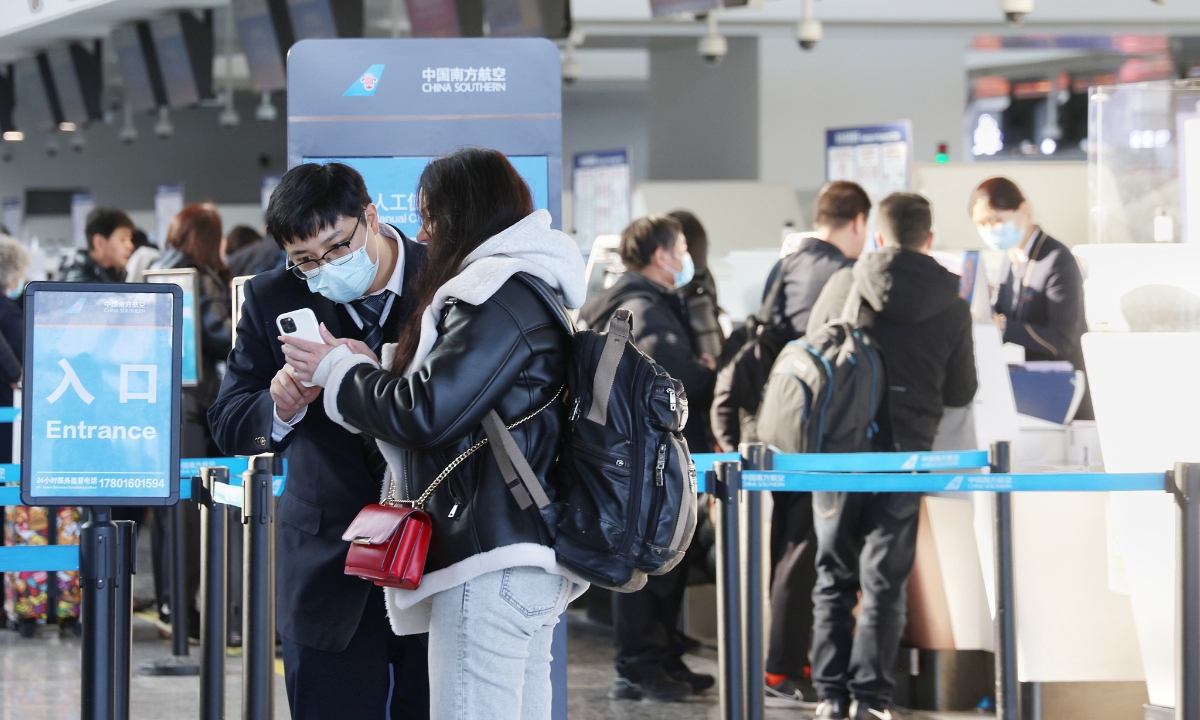
Photo:VCG
South Korean tourist arrivals in China rose more than nine times year-on-year in January, data released by the South Korean authorities showed, indicating a clear recovery in inbound tourism in the post-pandemic era, according to media reports.
Experts said that multiple factors are driving the growth, including China’s enhancement of tourism promotion, and they predict that international arrivals, including from South Korea, will rise.
Since the end of the pandemic, South Korea’s overseas travel has gradually recovered. In January, 142,000 South Korean citizens visited China, a surge of 908.7 percent year-on-year, with a 9.3 percent increase month-on-month, people.cn reported on Tuesday, citing data from South Korean Ministry of Justice.
The main reason for the substantial rise was that in the same month last year, China had just adjusted its inbound tourism policy and there were relatively few tourist groups as a result, Song Hyun Taek, director of the China division at Modetour Network Inc, a South Korean travel agency, told the Global Times.
The situation quickly changed, and starting from April 2023, the number of South Korean tour groups visiting China began to increase rapidly and has been continuously rising ever since, Song said.
The rebound of South Korean travelers is an epitome of China’s inbound tourism recovery. China’s inbound tourism has resumed in an orderly manner as reflected in the booming trend at several major tourism attractions in the country.
For example, from January 1 to February 27, Zhangjiajie, a popular destination in Central China’s Hunan Province, received 98,462 inbound tourists, up 34 times compared with 2023, according to CCTV.com.
Many South Korean travel agencies have introduced tailored tourism products for trips to China, with major airlines expanding routes to and from China.
For example, Korean Air is set to resume flights from Incheon to Zhangjiajie and Zhengzhou, Central China’s Henan Province by the end of April, while Jeju Air has announced plans to resume flights from Incheon to Shijiazhuang, North China’s Hebei Province this summer.
The downgrade of the pandemic response encourages South Korean travelers to go abroad. Geographical proximity also plays a significant role, which makes traveling relatively cost-effective, Zhang Huizhi, vice dean of the Northeast Asian Studies College at Jilin University, told the Global Times.
China’s recent enhancements of tourism promotion, including visa-free policies for certain countries, have been instrumental in drawing foreign tourists to the country, said Zhang.
Places like Zhangjiajie are among the most popular group tour destinations, according to statistics from HanaTour, a South Korean travel agency. Beijing, Hong Kong and Macao are also among the top popular destinations.
In addition to the appeal of natural scenery, there are several main reasons why South Korean tourists favor Zhangjiajie. These include the influence of movies and TV dramas, the international standard of tourism facilities such as road signs in the Korean language, as well as the availability of Korean-speaking tour guides, an employee with the China Tourism Office in Seoul told the Global Times.
The China Tourism Academy predicts that the foreign inbound tourism market is expected to recover to 50 percent of 2019 this year.
Global Times

Illustration: Tang Tengfei/GT
Anyone who pays attention to international relations cannot help but notice the intensive diplomatic activities taking place in Beijing these days. For example, on April 9, Beijing saw simultaneous visits by Russian Foreign Minister Sergey Lavrov, US Treasury Secretary Janet Yellen, heavyweight politicians from surrounding countries like Chairman of National Assembly of Vietnam Vuong Dinh Hue, Singaporean Deputy Prime Minister Heng Swee Keat, and heads of states from Pacific island countries like President of the Federated States of Micronesia Wesley W. Simina. In addition, German Chancellor Olaf Scholz and US Secretary of State Antony Blinken are also preparing to board planes to China.
Some believe the presence of high-ranking officials from both the US and Russia in Beijing alone highlights China’s significance. However, upon closer observation, there are visits of officials from not just the US and Russia, but also longstanding major Western powers like Germany, as well as many developing countries. Among them are neighboring countries that have maintained a high-level mutual trust and traditional friendship with China, major powers that have differences with China and even view China as their major strategic competitor, and emerging economies that many in the outside world see as engaging in some form of “manufacturing competition” with China. This rich diplomatic landscape is almost unique in today’s world, especially for a major power with significant influence. Some American media describe it as a “difficult balancing act,” but this description is clearly too narrow-minded.
The fact that so many political leaders appeared in Beijing at almost the same time is indeed somewhat coincidental. It is not deliberately arranged, but is the inevitable result and vivid manifestation of China’s distinctive diplomacy as a major country. In recent years, the international situation has been changing rapidly, but China has always adhered to harmony and coexistence, maintaining true multilateralism internationally, while providing vast development space for all countries with its own openness and strong development momentum.
For all countries, engaging with China involves a wide range of discussions, mutual understanding, and tangible results. Chinese people are very pragmatic in their approach, and if we support or oppose something, we aim at specific actions and mentality, never targeting any particular country or labeling them as enemies. Therefore, our circle of friends is growing increasingly larger, and “those who come are all guests.”
On the other side, why do some external opinions, including those from American media, perceive this as a “difficult balancing act?” This should have been normal between countries, but today it is seen as “difficult,” which reflects the abnormal state existing in international relations. Similarly, these days, Washington is also seeing the hustle and bustle, with consecutive events such as the US-Japan summit and the US-Japan-Philippines summit, while the British Foreign Secretary is also visiting the US. Looking closely at these activities, the most mentioned terms are “containment,” “alliance,” “aggression,” “protection,” and so on, and one can smell the scent of gunpowder even from afar. If the relationships between countries are to be delineated by “us” and “them,” with each side striving to maximize its own benefits, can this possibly be balanced?
Indeed, it is not easy for China to have forged its current diplomatic landscape. It relies not on mere talk or forming cliques, but on diligent efforts to promote mutually beneficial cooperation bit by bit. Here, there are no “allies,” only friends. Nowadays, an increasing number of foreign dignitaries take the initiative to visit China. China’s role in international and regional hot issues is growing, not only because of its size, but also because its principles are widely embraced. Even many Western countries, considered “friends of the US,” though more cautious in their statements, have not ceased their cooperation with China. In fact, even the US itself cannot truly resist the attraction of mutually beneficial cooperation.
For China, we don’t form small cliques; instead, we are striving to unite over 190 countries to form a large homeland of human society. Such a mindedness may be hard for some Western political elites to imagine, but whether they like it or not, they will have to accept the reality of a multipolar world in the future. China’s busy diplomacy will continue.
This is the kind of busyness that truly promotes dialogue and exchanges and promotes win-win cooperation. As for those kinds of “diplomacy” committed to hyping up conflict and hoping to profit from it, no matter how noisy it may be at the moment, in the end, it will be proven to be nothing but illusions.
Google on Tuesday revealed the details of a new version of its data center artificial intelligence (AI) chips and announced an Arm-based central processor.
Google’s tensor processing units (TPUs) are one of the few viable alternatives to the advanced AI chips made by Nvidia, though developers can only access them through Google’s Cloud Platform and not buy them directly.
 The logo of Google Cloud. /CFP
The logo of Google Cloud. /CFP
The logo of Google Cloud. /CFP
Google plans to offer the Arm-based central processing unit (CPU) called Axion via Google Cloud. The company said it has superior performance compared to x86 chips and general-purpose Arm chips in the cloud.
“We’re making it easy for customers to bring their existing workloads to Arm,” said Mark Lohmeyer, Google Cloud’s vice president and general manager of compute and machine learning infrastructure. “Axion is built on open foundations but customers using Arm anywhere can easily adopt Axion without re-architecting or re-writing their apps.”
The Alphabet subsidiary said the new TPU v5p chip is built to run in pods of 8,960 chips, and can achieve twice the raw performance as the prior generation of TPUs. To help ensure the pod runs at optimal performance, Google uses liquid cooling.
The Axion chip offers 30 percent better performance than general-purpose Arm chips, and 50 percent better performance than current generation x86 chips produced by Intel and Advanced Micro Devices, Google said.
The company plans to use Axion to power services such as its YouTube Ads in Google Cloud “soon.” The TPU v5p is generally available via Google’s cloud on Tuesday.
Rival cloud operators such as Amazon.com and Microsoft have also developed Arm CPUs as a way of differentiating the computing services they offer. Google has built other custom chips for YouTube, AI and its smartphones but had not built a CPU.
Source(s): Reuters
 /CFP
/CFP
/CFP
China added 56 new unicorn enterprises in 2023, which means the country added more than one each week during the period, according to the Hurun Global Unicorn Index 2024 released on Tuesday.
The Global Unicorn Index 2024 is a ranking of the world’s start-ups founded after 2000 that are worth at least $1 billion and not yet listed on a public exchange.
There are a total of 1,453 unicorn enterprises in the world, with a total market value of $4.6 trillion. China alone has 340 unicorn enterprises, ranking second worldwide, while the United States holds first place with 703. China’s unicorn enterprises are mainly in the artificial intelligence, semiconductors and new energy sectors, said the report.
The report also highlighted Hefei, capital of east China’s Anhui Province, as the fastest-growing city in terms of the number of unicorn enterprises in China, followed by other major cities including Guangzhou, Hangzhou and Suzhou.
TikTok’s parent company ByteDance retained the title of the world’s most valuable unicorn last year, worth approximately 1.56 trillion yuan (about $220 billion). Meanwhile, the Shanghai-based Chinese games giant miHoYo rose 91 places to the world’s 12th, with an estimated market value of some 160 billion yuan (about $22.6 billion), according to the report.
Source(s): Xinhua News Agency
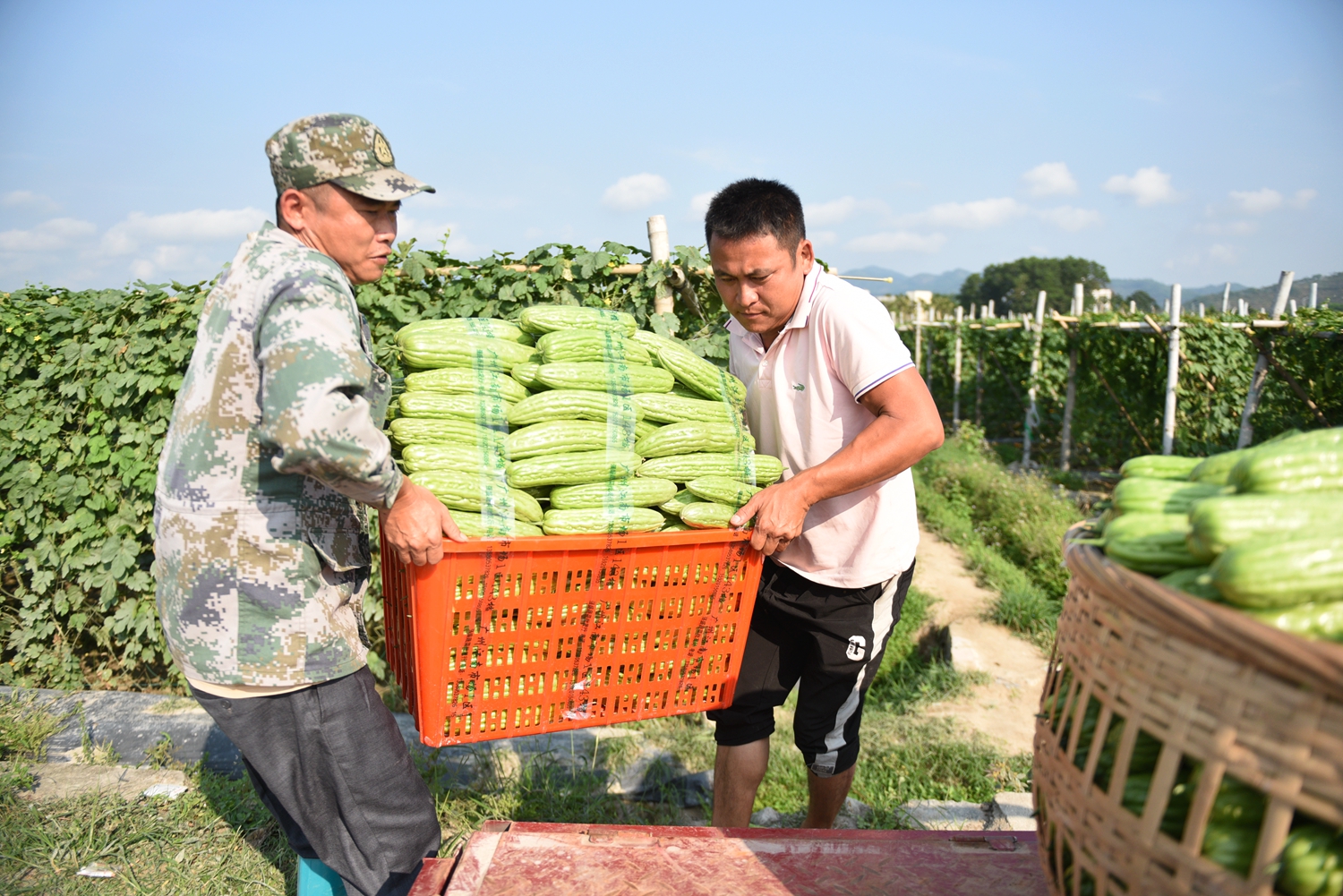 Farmers load bitter gourds onto a truck. /Photo provided to CGTN
Farmers load bitter gourds onto a truck. /Photo provided to CGTN
Farmers load bitter gourds onto a truck. /Photo provided to CGTN
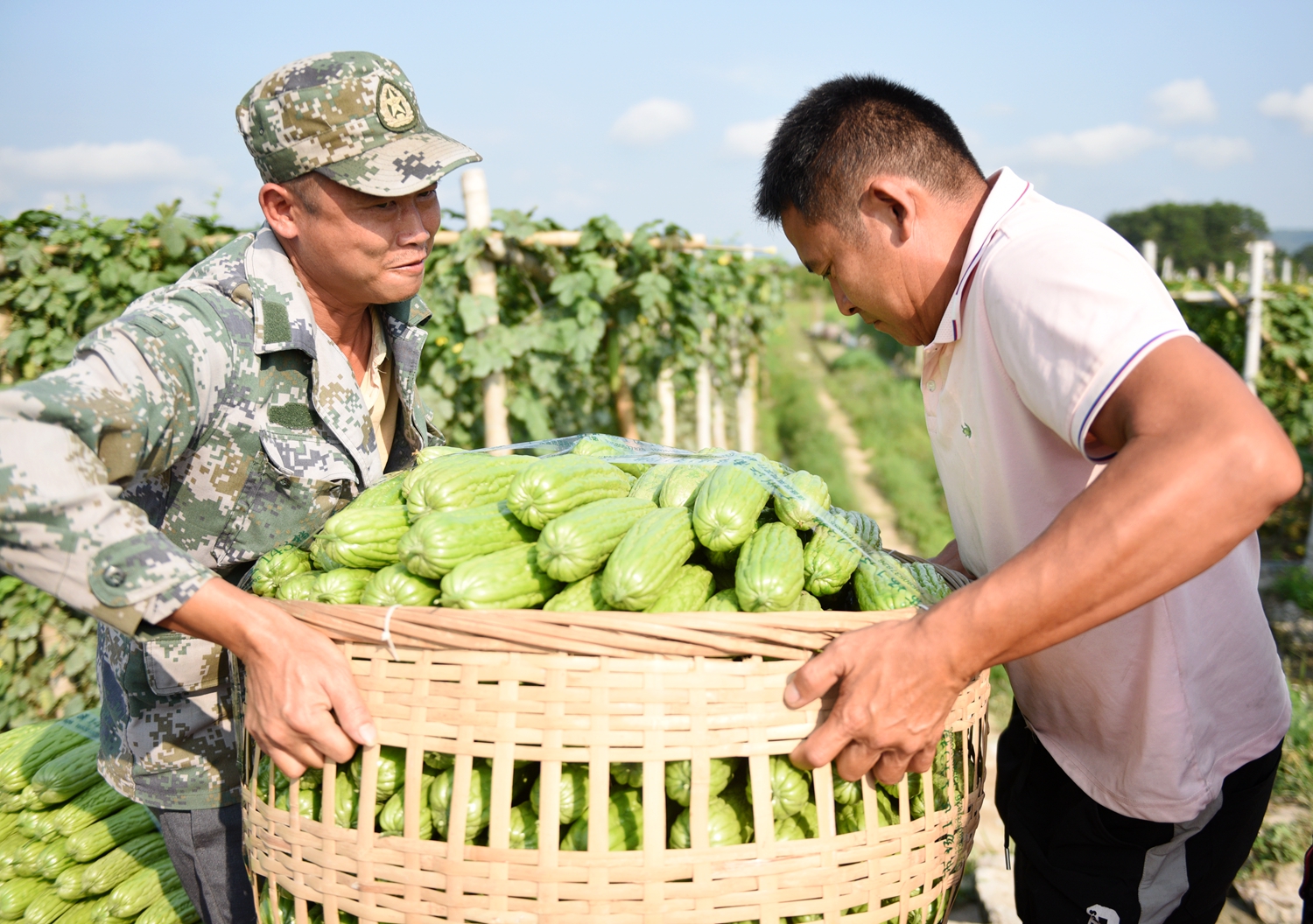 Two farmers carry a basket of bitter gourds. /Photo provided to CGTN
Two farmers carry a basket of bitter gourds. /Photo provided to CGTN
Two farmers carry a basket of bitter gourds. /Photo provided to CGTN
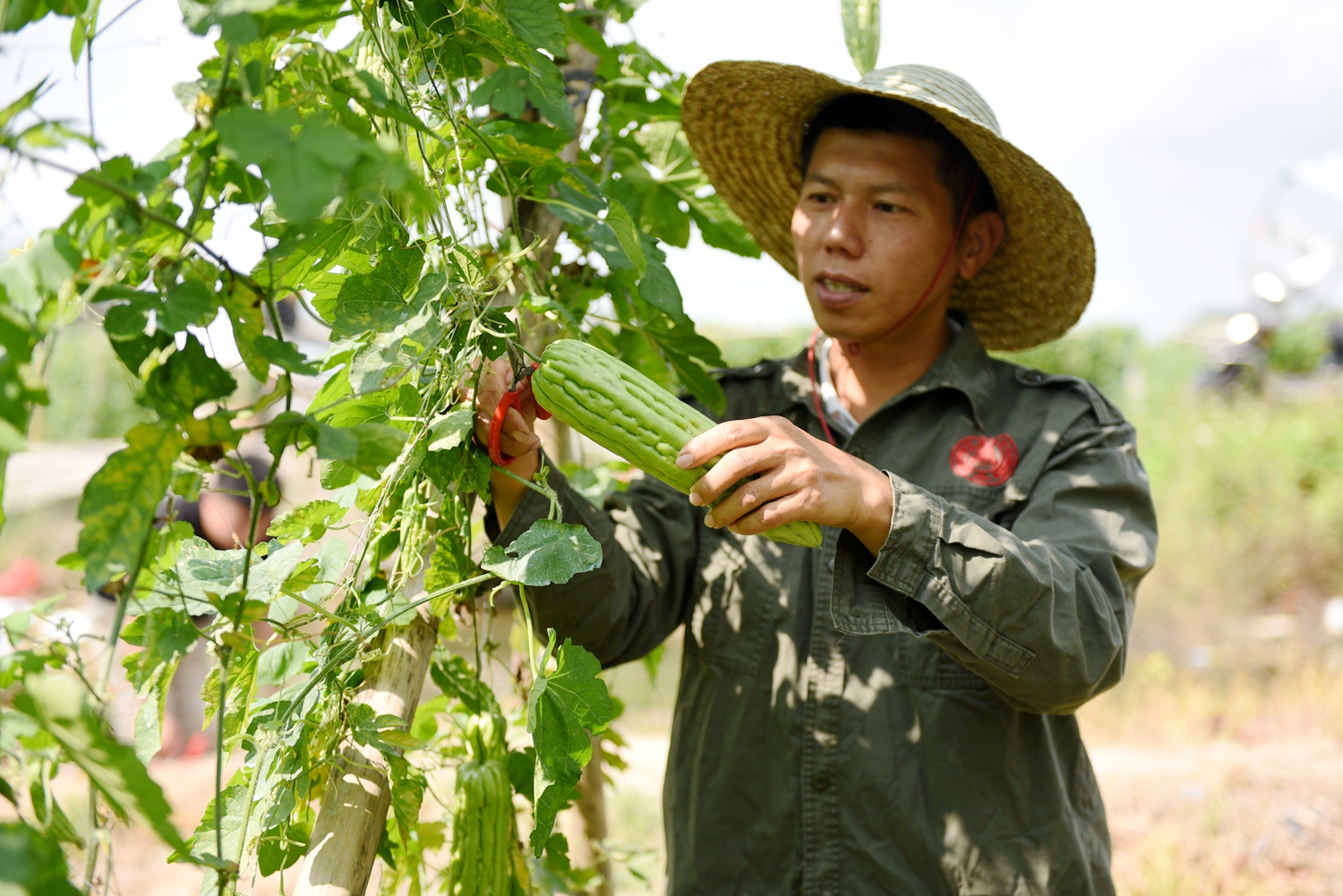 A farmer picks a bitter gourd. /Photo provided to CGTN
A farmer picks a bitter gourd. /Photo provided to CGTN
A farmer picks a bitter gourd. /Photo provided to CGTN
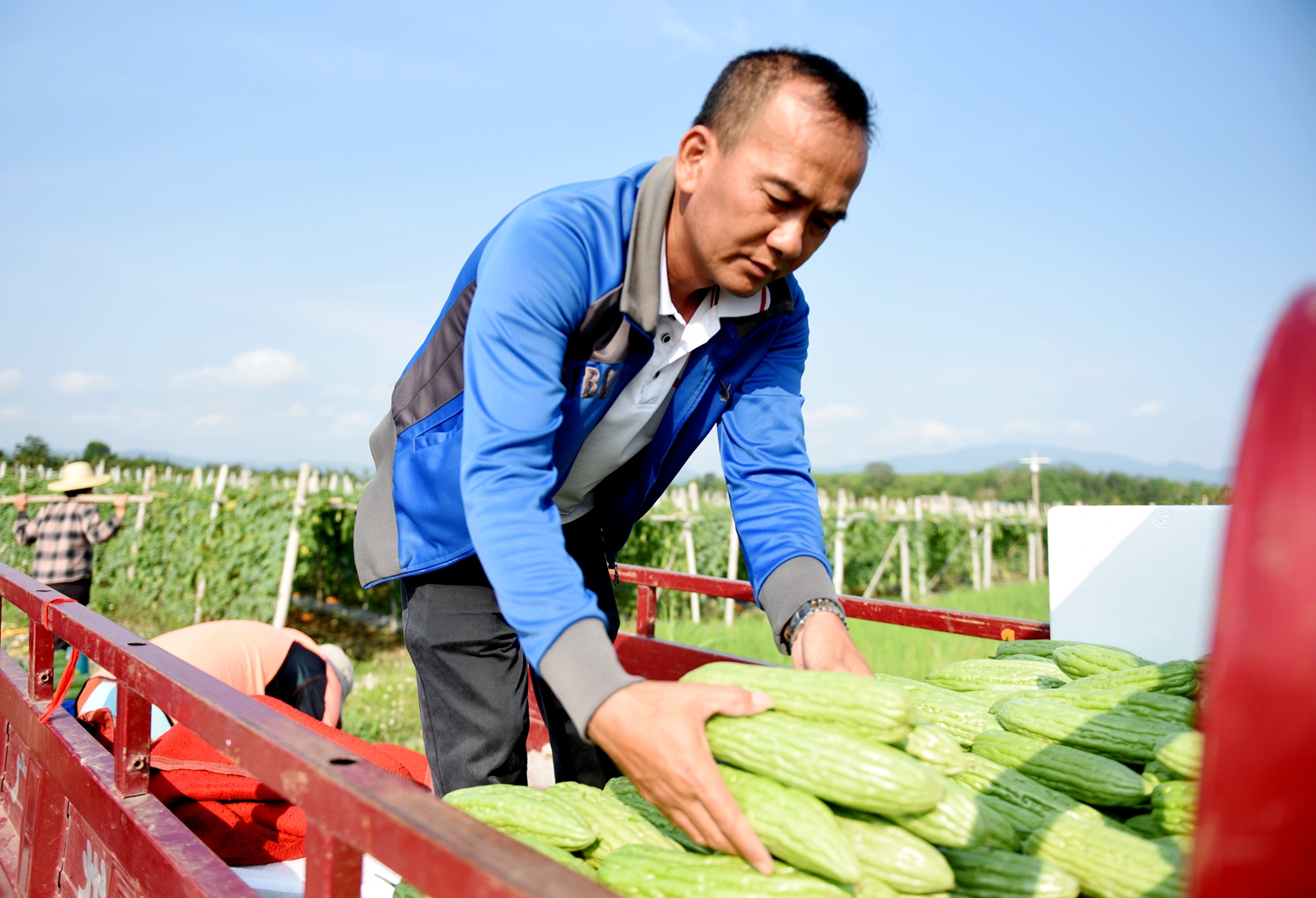 A farmer packs bitter gourds. /Photo provided to CGTN
A farmer packs bitter gourds. /Photo provided to CGTN
A farmer packs bitter gourds. /Photo provided to CGTN
 An undated photo shows bitter gourds of Fengmu Town. /Photo provided to CGTN
An undated photo shows bitter gourds of Fengmu Town. /Photo provided to CGTN
An undated photo shows bitter gourds of Fengmu Town. /Photo provided to CGTN
 An undated photo shows bitter gourds of Fengmu Town. /Photo provided to CGTN
An undated photo shows bitter gourds of Fengmu Town. /Photo provided to CGTN
An undated photo shows bitter gourds of Fengmu Town. /Photo provided to CGTN
 An undated photo shows bitter gourds of Fengmu Town. /Photo provided to CGTN
An undated photo shows bitter gourds of Fengmu Town. /Photo provided to CGTN
An undated photo shows bitter gourds of Fengmu Town. /Photo provided to CGTN
The harvest of bitter gourds in Fengmu Town of Tunchang County, south China’s Hainan Province has begun. In a local planting field, farmers are busy picking, weighing, packing and loading them onto trucks, building a busy farming scene in spring. Having been planted for over three decades, the bitter gourd has become a pillar industry of Fengmu Town, attracting many purchasers each year.
East China’s Shandong Province has set out to promote high-quality development of the Yellow River basin by developing industries such as high-end equipment manufacturing, green chemicals and modern agriculture, building wind and solar power bases, and launching multiple projects that represent the Yellow River culture, according to Zhou Naixiang, deputy secretary of the CPC Shandong Provincial Committee and governor of Shandong, at a press conference on Shandong’s work held by the State Council Information Office on Wednesday.
Zhou said that the province will focus on the implementation of flood control projects in the lower reaches of the river. Also, it will strengthen ecological environmental protection and management by accelerating the construction of wildlife corridors along the river, building the Yellow River Estuary National Park, strengthening the management of agricultural pollution, and implementing the action plan for biodiversity protection.
The ecological protection and high-quality development of the Yellow River basin, as a major national strategy, focuses on the great rejuvenation of the Chinese nation and the overall economic and social development.
In February of 2022, Shandong Province, where the Yellow River flows through its nine cities and 25 counties, released its ecological protection and high-quality development plan for the river basin in the province.
 Shandong’s flood control project in the lower reaches of the river in Jinan City, April 3, 2024. /CFP
Shandong’s flood control project in the lower reaches of the river in Jinan City, April 3, 2024. /CFP
Shandong’s flood control project in the lower reaches of the river in Jinan City, April 3, 2024. /CFP
In recent years, Shandong has been practicing the green, low-carbon and high-quality development across the entire province.
Shandong’s ecological improvements have been notable in the past three years. According to Zhou, the province’s energy consumption per 10,000 yuan (about $1,383) of the GDP has decreased by 15.8 percent, and the installed capacity of green and renewable energy power generation has exceeded 97 million kilowatts. In addition, average PM2.5 concentrations in the province have decreased by 19 percent in the past three years, and the proportion of water bodies with good quality has increased to 83.7 percent.
While pursuing green and low-carbon development, the province has made significant progress in promoting economic growth, developing science and technology, and improving the people’s wellbeing.
At the press conference, Zhou noted that the province’s GDP has grown at an average annual rate of over 6 percent in the past three years, reaching 9.2 trillion yuan in 2023. Also, the research and development spending has maintained a growth rate of more than 12 percent for the past three years, and the number of state key laboratories has reached 21 in the province.
01:42

Located in east China’s Anhui Province, Sihe Township awakes to a sea of clouds. The spectacular township exhibits a magical charm among the lush mountains.
(Cover is a screenshot. Video by Zhu Xuewen)
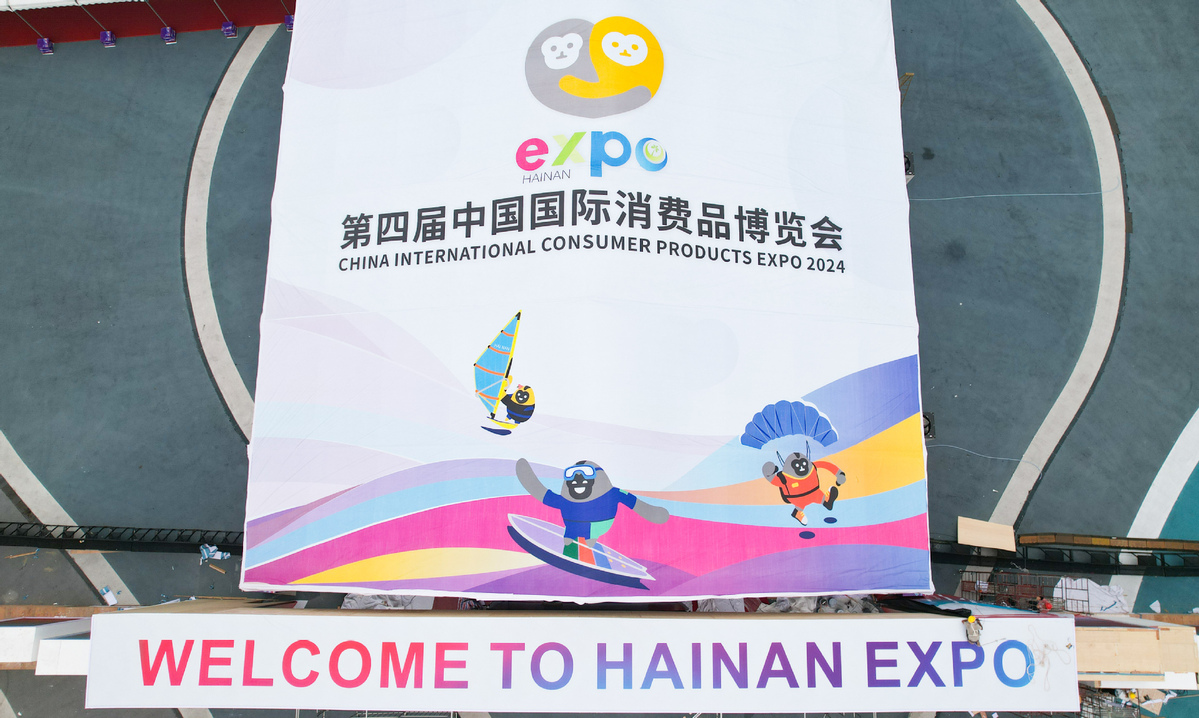 An aerial photo shows workers putting up branding around the entrance of the fourth China International Consumer Products Expo at the Hainan International Convention and Exhibition Center in Haikou, Hainan Province, April 8, 2024. /Xinhua
An aerial photo shows workers putting up branding around the entrance of the fourth China International Consumer Products Expo at the Hainan International Convention and Exhibition Center in Haikou, Hainan Province, April 8, 2024. /Xinhua
An aerial photo shows workers putting up branding around the entrance of the fourth China International Consumer Products Expo at the Hainan International Convention and Exhibition Center in Haikou, Hainan Province, April 8, 2024. /Xinhua
The fourth China International Consumer Products Expo (CICPE) will commence on Saturday in Haikou, the capital of south China’s Hainan Province.
A global platform that displays and trades high-end consumer products, this year’s CICPE has an exhibition area named “Dual circulation, Global buying” that includes exhibitors from duty-free and e-commerce businesses.
Chinese consumers can purchase quality products made by foreign brands duty-free from the exhibitors in this area, without going abroad or even leaving their homes.
The exhibition area is expected to showcase the country’s consumption power, facilitate the construction of the free trade port and contribute to the establishment of the new development paradigm of dual circulation.
“Dual circulation,” the new development paradigm China adopted in 2020, takes the domestic market as the mainstay while allowing domestic and foreign markets to reinforce each other.
 An aerial view of the Hainan International Convention and Exhibition Center in Haikou, Hainan Province, April 8, 2024. /Xinhua
An aerial view of the Hainan International Convention and Exhibition Center in Haikou, Hainan Province, April 8, 2024. /Xinhua
An aerial view of the Hainan International Convention and Exhibition Center in Haikou, Hainan Province, April 8, 2024. /Xinhua
The system was rolled out based on changes in China’s development conditions domestically and internationally.
With a population of over 1.4 billion and a middle-income group of more than 400 million, stable demand from the world’s largest consumer base serves as a crucial pillar for the global economy.
Meanwhile, in recent years, along with the changes in the global political and economic environment, the upsurge in deglobalization and the unilateralist and protectionist acts by certain countries, the traditional global circulation has been notably weakened.
As a result, Beijing urges efforts to root the country’s development inside the country and rely more on the domestic market to achieve economic growth.
Thus, the new development paradigm doesn’t mean China is withdrawing to its domestic market and shying away from the world. Quite the opposite, Beijing continues to facilitate its huge domestic market to foreigners, and hold the CICPE is a practical move to serve the establishment of the new paradigm.
According to Vice Minister of Commerce Sheng Qiuping, China’s retail sales of consumer goods, a major indicator of consumption strength, climbed 5.5 percent year on year in the first two months of 2024 to 8.13 trillion yuan (about $1.15 trillion), revealing the resilience and vitality of the country’s consumer market.
By attending the expo, foreign enterprises will not only have the opportunity to enhance their brand image but also to take advantage of the expo’s spillover effects and Hainan’s tax exemption policies to enter the vast Chinese consumer market.
This year’s expo will boast a sprawling floor area of 128,000 square meters, surpassing its previous editions.
As products of more than 3,000 brands from 59 countries and regions worldwide will be on display, it also shows the attractiveness and potential of the Chinese market for foreign businesses.